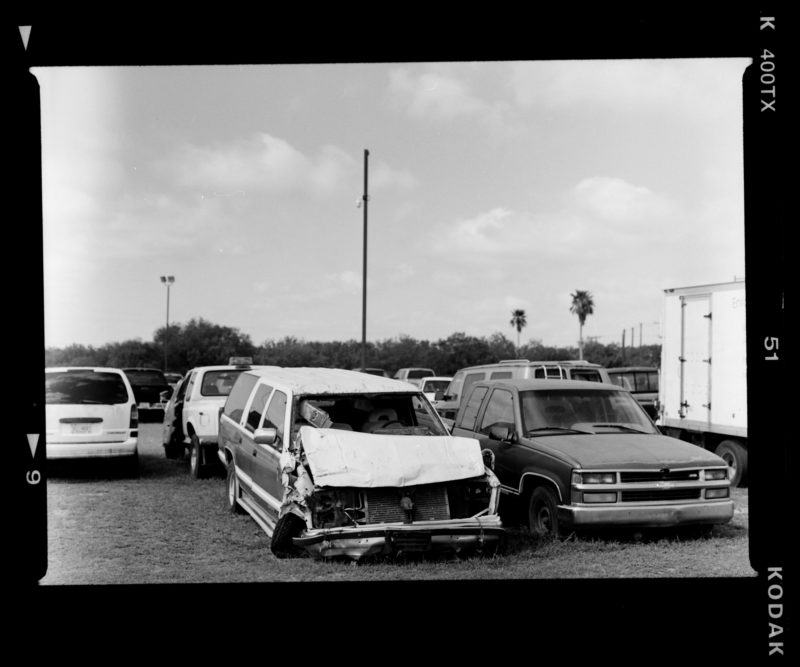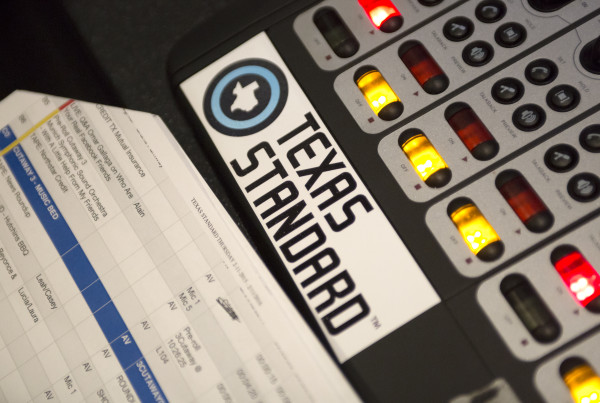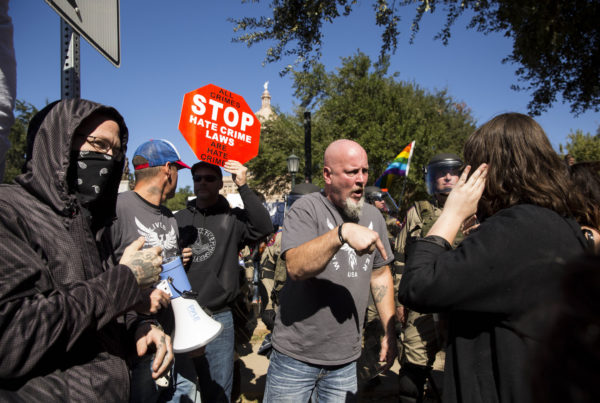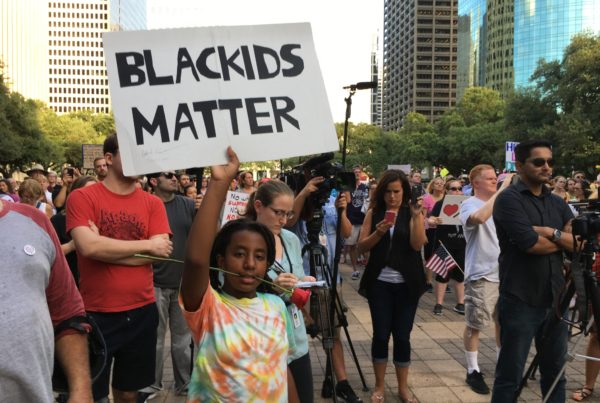In south Texas, Mexican cartels often use teenagers – many just middle school-aged – to smuggle drugs. The cartels entice kids in impoverished Texas border towns into trafficking huge loads of marijuana or cocaine by promising quick cash. Then of course they leave them hanging when they’re caught by Border Patrol or local law enforcement. Teens end up doing serious time in south Texas juvenile detention centers. And when they finally get out, they leave with criminal records that make it even harder to find jobs in depressed areas of the Rio Grande Valley.
The story of Elias, a Falfurrias teen, isn’t all that unusual.
Elias’ uncle made it sound easy: just hop in the car, drive it from point A to point B, and get rewarded with $6,000 in cash. To sweeten the deal, if he made it, he got to keep the car – a quick little Chevy pick-up with a Camaro engine. Elias was 14 years-old, still too young to even qualify for his learner’s permit.
“Alright. I drove the truck from here in [Falfurrias] to Corpus, to a strip club,” Elias says. “The first time I did, I made it. I liked the money, I was young. My dad had just died. I was struggling with my mom. We never had a car; we never had nothing badass. It sucks, you know? So that’s what I got into,”
Mexican cartels are increasingly leaning on south Texas teenagers like Elias to handle their smuggling work north of the border. It’s an area that is, by far, the busiest stretch of border in the U.S. for the passage of drugs.
Cartels recruit teens through family members or friends and use them as drivers for cars loaded down with hundreds, sometimes thousands of pounds of drugs. For many boys along the border, it feels like an offer they can’t refuse, paying them at a lucrative per pound rate of between $10 and $50, according to 79th Judicial District Attorney Carlos Garcia.
“It’s definitely the money,” Garcia says. “They can make a lot of money in a short period of time. There’s not a lot of opportunities, especially in rural communities. Usually the opportunities find them. Once somebody’s been in the business for several years, maybe they’ve already aged out or they’re not juveniles anymore, but they’ll go and try to recruit some to come in.”
Using juveniles carries advantages for cartels, Garcia says.
“They’re going to look for where there’s the least amount of risk. When the juvenile’s involved, everything’s going to stop. Law enforcement knows – there are specific rules that keep them from talking to this juvenile,” he says.
The connections between cartels and juveniles aren’t new. In a particularly striking example, two Laredo teens became prolific assassins for the Zeta cartel in the mid-2000s. Dan Slater published a book last September about them titled “Wolf Boys.”
“The way I’d seen the cartel wars depicted in the media was through the stories of the cartel bosses, the people we see on the front of The New York Times. The Chapo Guzmáns… The more I learned about the drug war, the more I learned those stories really had nothing at all to do with the reality of the drug war. The reality was more about young men, and often boys, slaughtering each other,” Slater says.
Remedies have been few and far between. In 2012 Eagle Pass opened the Border Hope Restorative Justice Center, intended specifically for kids recruited into the drug trade. But the state shut down the center a year later and the juvenile probation officer who spearheaded the initiative resigned last year amid pressure.
Meanwhile, the problem persists.
The cartels bribe Border Patrol agents to get drugs across the Rio Grande, then turn to Texas teens like Elias to act as mules to get the drugs through the major inland checkpoints and into urban areas upstate. Elias knew he was a small pawn in this big web, but a pawn that made really good money – too good he says for him to pass up.
“I shouldn’t have been doing what I was doing, but to be honest, around here that’s all there is. I kept moving [expletive deleted] for my uncle,” Elias says. “I was 14 years-old. I moved out of my mom’s house. I was giving her $1,000 a week. I was doing good. [Expletive deleted] still going to school. I had my dumbass friends who were dropped out selling for me,” he says.
A few months into his work for the cartel, Elias was introduced to synthetic marijuana, also known as spice or K2. It’s a drug that’s rapidly growing in popularity among America’s poor because of its relative cheapness and potency. Elias had more money than he knew what to do with, and started smoking his supply. He would only sober up when his uncle told him he had another job for him. Then things got even worse. He saw blue and red lights as he was taking a load to Corpus.
“That time they lit me up here in Fal,” he says. “I had my truck. I wasn’t going to stop. I took off. I figured – it was just the Border Patrol. I had always ran from Border Patrol. By the time I came through the backroads of Fal, I had state troopers on me… I lost them going into San Diego. I burned them [expletive deleted]. They caught me again in SD coming out the other side going to Freer. I was trying to go Beeville to hide out in the hills. I flipped over on the curves. I just grabbed the [expletive deleted] and started running into the monte. I broke my leg. They found me sooner or later. I was just on the floor. The vato said, ‘We found you because you had a white trail following you.’”
The cops caught Elias with several hundred pounds of cocaine and some K2. If he hadn’t run, he might have been OK. Brooks County Sheriff Benny Martinez says that often when kids get caught at the checkpoint, officers treat them with “soft-hands,” seizing the drugs and letting the boys go. But Elias did run, and so he was sent to serve time in the juvenile center in San Diego.
That’s one place Texas sends kids caught and charged with a felony-level drug crimes in south Texas.
“To manipulate a child to do it is very easy,” says Lionel Ibarra, who is in charge of the San Diego Juvenile Detention Center. “They paint a real beautiful picture to these kids, and they fall in the trap. How can you tell a kid you need to go find a job at McDonald’s for $8.50 [per hour] when they can make $850 dealing drugs in the same hour?”
The San Diego Juvenile Detention Center has 22 beds. They’re often full.
“You see these kids that are so – they have so much of a future ahead of them,” Ibarra says. “And all of a sudden they turn the wrong way, and it’s downhill after that. Especially in a little community like ours. In a little community like this, everybody knows everybody.”
The other place teens in south Texas are sent for felony drug crimes is the Starr County Juvenile Detention Center in Rio Grande City. Doralisa Saenz oversees the 12 beds and in the basement of the Starr County courthouse.
“Before we used to have several kids from Mexico that would get caught on this side,” Saenz says. “That is on the decrease. But we’ve seen they’ve used local kids to smuggle drugs.”
Saenz and Garcia agree that relaxed punishment from local district attorneys for juveniles involved in smuggling is in part driving the increase. But the teens that do get involved still face consequences.
“Law enforcement can still see your juvenile record at any time in your life,” Saenz says. “We’ve had kids come back and say, ‘This is affecting me for financial aid. For little jobs.’ Local Whataburger, HEB, do criminal background checks. It affects them. They carry that for a while.”
I met former Kleberg County judge Pete de la Garza at a Mexican restaurant in Riviera, 30 miles east of Falfurrias. He’s now the main juvenile defender in Falfurrias and has defended kids as young as 11. He’s pushed hard to keep kids out of juvenile centers, which he calls just a smaller version of prison. He says reforms are badly needed.
“It all boils down to money,” de la Garza says. “And money is what the state of Texas doesn’t have. We need more juvenile centers, we need more bootcamps. We need a lot of places they can get psychological help. There are so many that a lot of times they slip through the cracks. You send them to a psychologist – the psychologist will take to them maybe three times – and that’s it.”
Elias had a rough time in the San Diego Detention Center. And since his release, he’s been struggling to stay straight. He got kicked out of school for fighting his principal and is trying to get a GED. His girlfriend also got pregnant and had a son. The week before I met him he says she took all of his belongings, and their nine-month-old son, and vanished.
“For my son I’ve been trying to stay out of trouble, but I haven’t been able to see my son or nothing,” he says. “I’ve been going back to what I was doing before. [expletive deleted], it’s extra hard. I [expletive deleted] went and applied everywhere. Walmart told me straight up: you have a clear history. So they wouldn’t hire me. [expletive deleted]. I’ve even gotten clean for jobs. Piss clean and everything. It’s [expletive deleted] hard to get a job, it really is. You can’t find [expletive deleted] around here. I would love to be able to get what I can for my son. To do for my family. And just can’t. I’ve tried so hard. And it just doesn’t happen. It’s not as easy as it sounds.”
He’s learned the hard way that the easy way to make money in the Rio Grande Valley, isn’t that easy after all.














